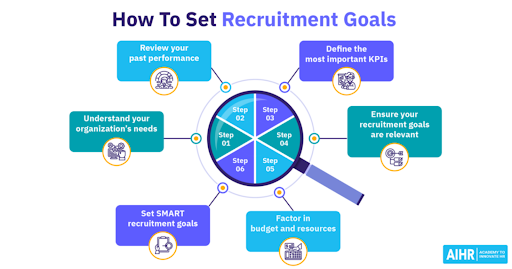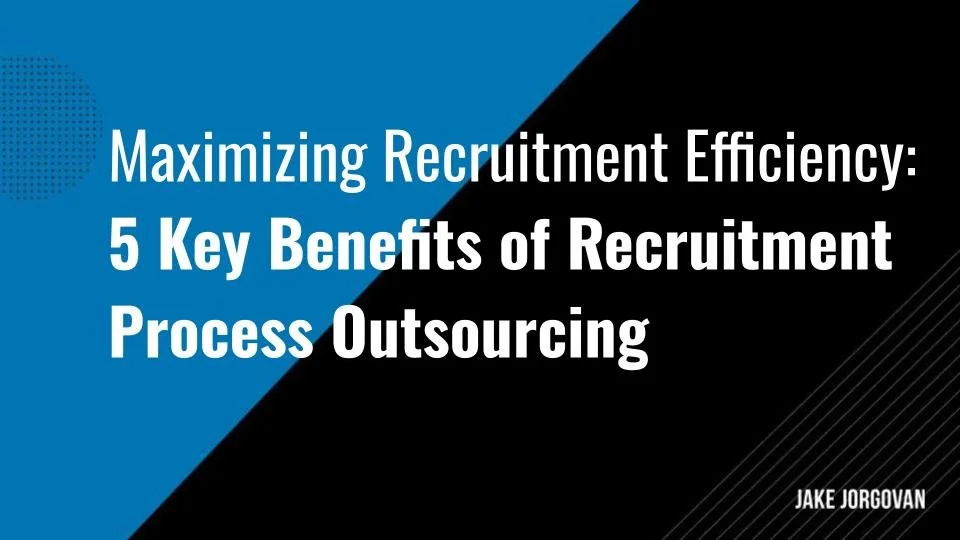5 Key Steps for Preparing Your Business for Recruitment Process Outsourcing (RPO)
Outsourcing recruitment can transform your hiring strategy, and Recruitment Process Outsourcing (RPO) is a game-changer for businesses seeking efficiency and expertise.
But, preparation is key to reaping the benefits.
In this article, we outline the five essential steps to get your business ready for RPO.
These steps will ensure a smooth transition and maximize the impact of your outsourcing efforts.
Let’s dive in and discover how to set your company up for RPO success.
The Importance of Preparing Your Business for Recruitment Process Outsourcing
Preparing your business for recruitment process outsourcing is vital for achieving a seamless transition and maximizing the benefits. This preparation significantly impacts your business’s ability to enhance recruitment efficiency, improve candidate quality, and achieve growth objectives.
One primary reason for thorough preparation is to align your business objectives with the capabilities of the RPO provider. A clear understanding of your recruitment needs and goals helps you select the right partner who can deliver targeted solutions. This alignment allows the RPO provider’s strategies to be in sync with your business objectives, resulting in a more effective partnership.
Proper preparation helps mitigate risks associated with the transition. Transitioning to an RPO model involves significant changes in processes and systems. Without adequate preparation, your business could face disruptions, inefficiencies, and increased costs. Identify potential risks and develop mitigation strategies so you can achieve a smoother transition. Plus, you’ll reduce the likelihood of unexpected challenges.
Lastly, preparing for RPO enables your business to leverage advanced recruitment technologies and methodologies. RPO providers offer innovative solutions and industry best practices. Integrating these technologies enhances your recruitment capabilities, so your business will be more competitive in attracting top talent.
5 Steps for Preparing Your Business for RPO
1) Assess Current Recruitment Processes and Identify Needs
Preparing for Recruitment Process Outsourcing is critical to streamline your hiring. The first step, assessing your current recruitment processes, sets a solid foundation. This phase allows you to understand your existing strengths and areas for improvement. Here’s how to get started:
Identify Key Metrics: Evaluate your current recruitment metrics, such as time-to-hire, cost-per-hire, and candidate quality. This analysis highlights performance gaps. Look at trends over time to spot recurring issues and successes.
Map the Workflow: Document your recruitment process from job requisition to onboarding. Identify bottlenecks and inefficiencies. Visual workflow diagrams can help you see where delays and miscommunications occur.
Evaluate Technology: Assess your current recruitment technology and tools. Determine if they integrate well and support your needs. Consider whether an Applicant Tracking System (ATS) or other software updates could streamline processes.
Conduct Stakeholder Interviews: Gather insights from hiring managers, HR staff, and recent hires. Understand their experiences and identify pain points. Regular feedback sessions can provide ongoing insights into evolving needs.
Review Job Descriptions: Ensure your job descriptions are clear, inclusive, and up-to-date. Effective descriptions attract suitable candidates. Compare your descriptions to industry standards to see if they need adjustments.
Analyze Recruitment Channels: Determine which sourcing channels yield the best candidates. Allocate resources to high-performing channels. Examine both traditional and digital platforms to optimize your outreach strategy.
Assess Compliance: Check that your processes comply with relevant labor laws and regulations. Avoid potential legal issues during the transition. Regular audits can help maintain compliance and adapt to new laws.
Insider Tip: We recommend conducting a SWOT analysis specifically tailored to your recruitment function. This approach helps pinpoint precise strengths, weaknesses, opportunities, and threats, giving you a comprehensive view to inform your RPO strategy. Additionally, consider implementing a pilot RPO program in one department to test and refine processes before a full rollout.
2) Research and Select Suitable RPO Providers
Choosing the right Recruitment Process Outsourcing provider is a crucial step for your business. The decision impacts your recruitment efficiency, candidate quality, and overall business growth. To make an informed choice, follow these steps so that you select the best partner for your needs:
Define Your Objectives: Clearly outline what you aim to achieve with RPO. Whether it's reducing time-to-hire, improving candidate quality, or scaling recruitment efforts, knowing your goals helps filter potential providers.
Research Potential Providers: Look for RPO providers with a proven track record in your industry. Check their case studies, client testimonials, and success stories. Consider their experience with companies of your size and market position.
Evaluate Service Offerings: Compare the range of services each provider offers. Ensure they align with your specific needs, such as sourcing, screening, interviewing, and onboarding. Some providers might also offer additional services like employer branding and talent market insights.
Assess Technological Capabilities: Investigate the technology platforms and tools each provider uses. Compatibility with your existing systems and innovative solutions like AI-driven analytics are crucial for a seamless integration.
Check Cultural Fit: Ensure the provider's company culture aligns with yours. A good cultural fit can lead to a more effective partnership. Look for alignment in values, communication style, and approach to problem-solving.
Review Pricing Models: Understand the pricing structures and models. Compare costs against the services provided to determine value for money. Transparent pricing helps avoid hidden fees and surprises.
Request Proposals and Conduct Interviews: Ask shortlisted providers for detailed proposals. Conduct interviews to clarify any doubts and assess their responsiveness and expertise.
Insider Tip: We advise conducting pilot projects with top contenders. This hands-on trial helps evaluate their practical efficiency and adaptability to your specific needs before making a long-term commitment. It provides real-world insights into their capabilities and service quality.
3) Establish Clear Goals and Expectations
Setting clear goals and expectations is essential for a successful RPO partnership. This step ensures both parties are aligned and working towards the same objectives. A well-defined roadmap minimizes misunderstandings and enhances collaboration. Here’s how to establish these goals and expectations effectively:
Define Success Metrics: Identify key performance indicators (KPIs) such as time-to-fill, quality of hire, and candidate satisfaction. These metrics will help measure the RPO provider's performance and impact on your business.
Set Realistic Targets: Establish achievable short-term and long-term goals. Break these down into specific, measurable, attainable, relevant, and time-bound (SMART) objectives. This clarity guides your RPO provider in meeting your expectations.
Outline Scope of Services: Clearly delineate the services you expect from the RPO provider. Specify areas like sourcing, screening, interviewing, and onboarding. Detailed scope helps avoid overlaps and gaps in service delivery.
Agree on Communication Protocols: Establish how and when updates will be communicated. Decide on regular meetings, reporting formats, and key contact points. Consistent communication ensures transparency and quick issue resolution.
Determine Roles and Responsibilities: Clearly define the roles of your internal team and the RPO provider. Make sure both sides understand their responsibilities to avoid confusion and improve collaboration.
Set Budget Parameters: Discuss and agree on the budget for the RPO services. Promote transparency on costs and include contingency plans for unexpected expenses. This financial clarity helps in managing resources efficiently.
Implement Feedback Mechanisms: Develop a system for regular feedback and performance reviews. This allows for continuous improvement and adjustments to the strategy as needed.
Insider Tip: We recommend creating a detailed Service Level Agreement (SLA) that outlines the specific expectations and deliverables. This formal document ensures accountability and provides a reference point for evaluating the RPO provider's performance. Regularly reviewing and updating the SLA can help maintain alignment with evolving business needs.
4) Prepare Internal Teams for the Transition
Preparing your internal teams for the transition to RPO is a pivotal step. This makes for a smooth integration and minimizes resistance. Effective preparation fosters collaboration and sets the stage for success. Follow these detailed steps to ready your team:
Communicate the Change: Clearly explain the reasons for adopting RPO and the benefits it will bring. Address any concerns and emphasize the positive impact on workload and efficiency. Transparency builds trust and eases the transition.
Define New Roles and Responsibilities: Clarify how roles will change with the RPO partnership. Specify which tasks will remain in-house and which will be handled by the RPO provider. Clear delineation prevents overlap and confusion.
Provide Training: Offer training sessions on new processes and tools introduced by the RPO. Ensure your team understands how to interact with the RPO provider and use any new technology. Well-trained staff adapt more quickly and efficiently.
Establish Collaboration Protocols: Set up processes for effective collaboration between your internal team and the RPO provider. Define communication channels, reporting structures, and escalation procedures. Smooth collaboration enhances productivity.
Foster a Positive Attitude: Encourage a positive mindset towards the change. Highlight success stories and quick wins from the RPO transition. Positive reinforcement builds morale and supports acceptance.
Monitor Progress: Regularly check in with your team to assess how the transition is going. Address any issues promptly and provide additional support if needed. Continuous monitoring brings long-term success.
Involve Key Stakeholders: Engage key stakeholders early in the process. Their support and advocacy can help drive acceptance and smooth implementation. Involved stakeholders provide valuable insights and support.
Insider Tip: We recommend creating a detailed change management plan that includes specific milestones and success metrics. This structured approach helps track progress and address issues proactively. Regularly updating this plan with feedback from your team allows for continuous improvement and adaptation.
5) Develop a Detailed Implementation Plan
Developing a detailed implementation plan is the final step for a successful transition to Recruitment Process Outsourcing. This plan serves as a roadmap, guiding both your internal team and the RPO provider through the transition. A well-structured implementation plan mitigates risks and creates alignment. Here’s how to create an effective implementation plan:
Set Clear Milestones: Define specific milestones for each phase of the RPO implementation. These milestones help track progress and ensure timely completion. Break down the project into manageable stages.
Allocate Resources: Identify and allocate the necessary resources, including personnel, technology, and budget. Make sure all required resources are available and properly assigned. Resource planning prevents bottlenecks and delays.
Establish a Timeline: Develop a detailed timeline outlining key activities and deadlines. Create a timeline that is realistic and accounts for potential delays. A clear timeline keeps the project on track.
Develop Communication Protocols: Outline how communication will be handled throughout the implementation. Define reporting structures, meeting schedules, and points of contact. Effective communication is critical for coordination and problem-solving.
Identify Risks and Mitigation Strategies: Assess potential risks and develop mitigation strategies. Consider factors such as technology integration issues, staff resistance, and budget overruns. Proactive risk management reduces the impact of unforeseen challenges.
Conduct Pilot Testing: Implement a pilot phase to test the RPO process on a smaller scale. Gather feedback and make necessary adjustments before a full rollout. Pilot testing helps identify and resolve issues early.
Monitor and Adjust: Continuously monitor the implementation progress and make adjustments as needed. Review the plan regularly so that it remains aligned with your goals. Flexibility is key to addressing evolving needs and challenges.
Insider Tip: We recommend using project management software to track the implementation plan. Tools like Asana or Trello can enhance visibility, streamline communication, and bring accountability across all phases. This approach keeps everyone aligned and aware of their responsibilities.
Find Your Best Talent with RPO
Successfully preparing for Recruitment Process Outsourcing can revolutionize your hiring approach. Each step you take brings you closer to a more efficient, expert-driven recruitment process.
Are you ready to transform your business with RPO?
Leverage these five steps above to power your overall strategy and growth. The right preparation today will pave the way for future success.
Recommended Reads:

















